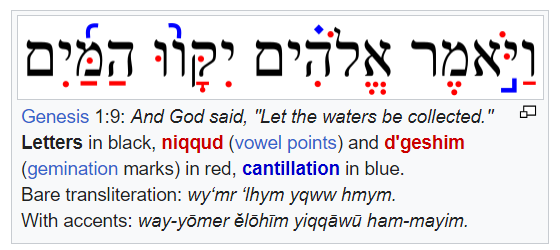Hebrew cantillation, trope, trop, or te’amim is the manner of chanting ritual readings from the Hebrew Bible in synagogue services. The chants are written and notated in accordance with the special signs or marks printed in the Masoretic Text of the Bible, to complement the letters and vowel points.
These marks are known in English as ‘accents’ (diacritics), ‘notes’ or trope symbols, and in Hebrew as taʿamei ha-mikra (טעמי המקרא) or just teʿamim (טעמים). Some of these signs were also sometimes used in medieval manuscripts of the Mishnah. The musical motifs associated with the signs are known in Hebrew as niggun or neginot (not to be confused with Hasidic nigun) and in Yiddish as trop (טראָפ): the word trope is sometimes used in Jewish English with the same meaning.
There are multiple traditions of cantillation. Within each tradition, there are multiple tropes, typically for different books of the Bible and often for different occasions. For example, different chants may be used for Torah readings on Rosh Hashana and Yom Kippur than for the same text on a normal Shabbat.
https://en.wikipedia.org/wiki/Hebrew_cantillation

